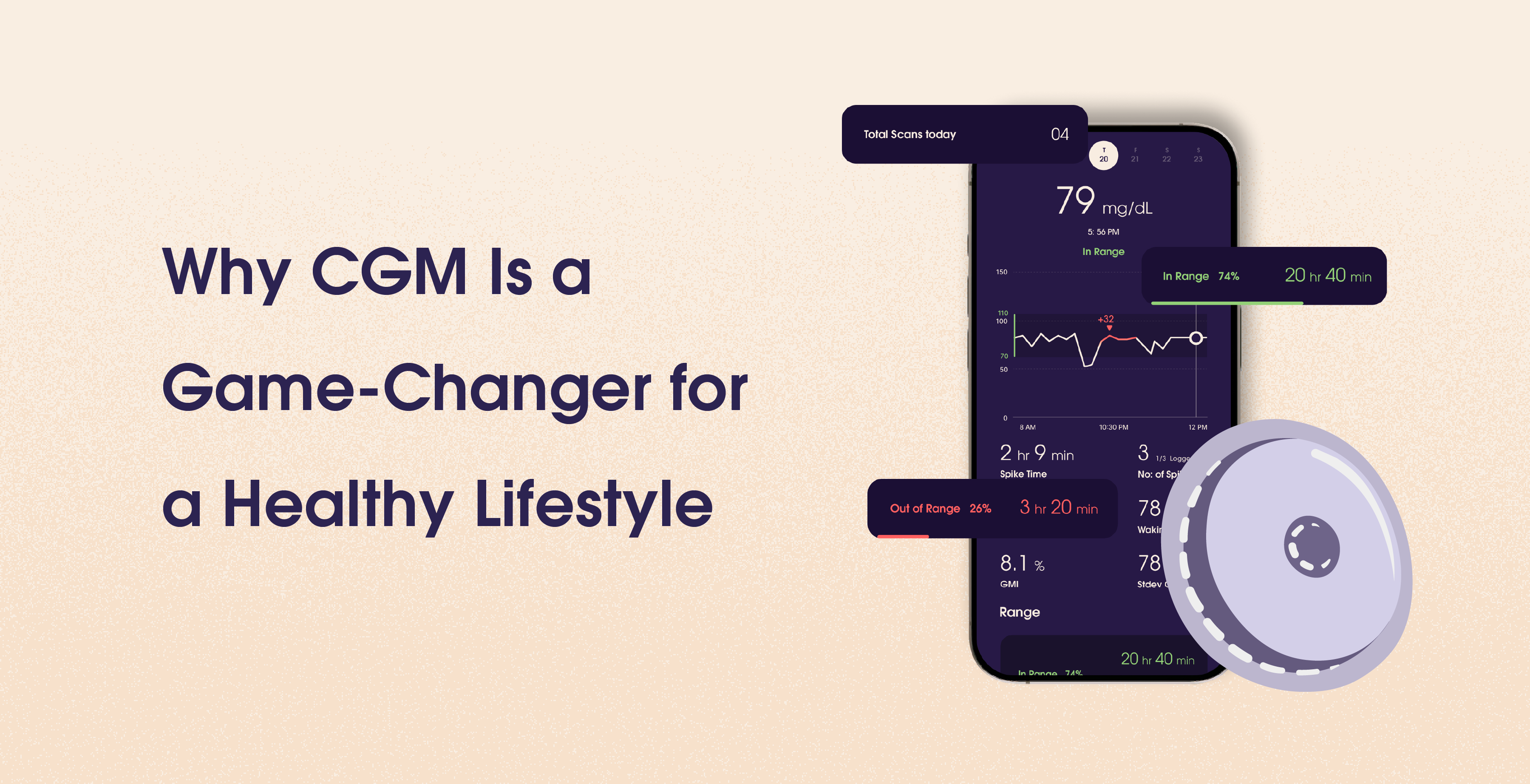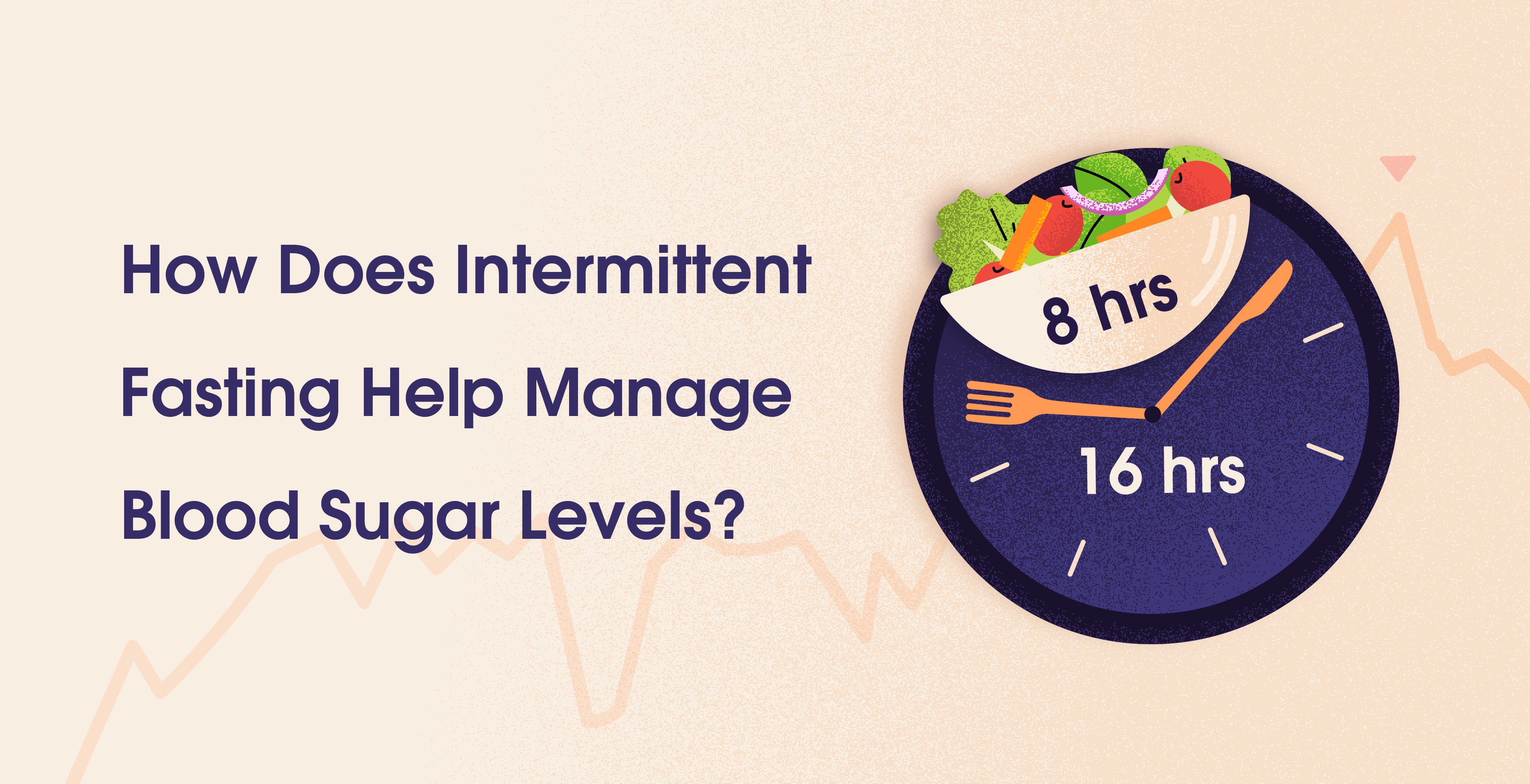Prediabetes in Children and Teens
Mar 27, 2024
Ashima Raizada



Table Of Contents
When we talk about prediabetes or diabetes, our minds often jump to it being a problem for older folks, right? I mean, no one young gets it unless it's genetic or type 1 diabetes, right? But what about kids? They're running around, playing, eating relatively healthy - it's not like they're downing tons of sugar every day. So, does that mean they can't get prediabetes? Let's figure this out together.
Highlights
Pediatric diabetes has doubled in 20 years, with 1 in 5 teens now having prediabetes.
Prediabetes in youth means blood sugar is above normal but not high enough for type 2 diabetes
Key tests for prediabetes in children are fasting glucose, HbA1c, and glucose tolerance tests
Kids at high risk for prediabetes often have a family history of diabetes, poor diet, or belong to certain ethnic groups
Managing prediabetes in kids involves a healthy diet, exercise, and sometimes metformin
Prediabetes in Children & How To Test For it?
Prediabetes in children and teens means their blood sugar is higher than it should be, but it's not high enough yet to be called type 2 diabetes. Doctors use a few tests to spot this:
The fasting blood glucose test checks blood sugar after a night without eating. If it's between 100 to 125 mg/dL (5.6-6.9 mmol/L), it shows the body isn't using sugar right.
The HbA1c test looks at average blood sugar over three months. A score between 5.7% and 6.4% means blood sugar has been too high.
During the glucose tolerance test, doctors measure blood sugar two hours after a sweet drink. Levels from 140 to 199 mg/dL (7.8-11.0 mmol/L) signal a problem with handling sugar. (1)
These tests help catch prediabetes early, opening the door to steps that can prevent type 2 diabetes.
Signs and Symptoms of Prediabetes in Children
It's easy to miss signs of prediabetes in children and teens, just as it is for adults. Sometimes signs show up but sometimes, they don't show up at all. The fact of the matter is that prediabetes in children and teens pretty much has the same signs as it does in adults. Here are some signs:
Feeling more thirsty than usual
Needing to urinate often
Feeling hungrier than normal
Feeling very tired
Having trouble seeing clearly
Noticing darker skin, especially around the neck or in the armpits and groin area
Losing weight without trying, which is more rare in kids with type 2 diabetes compared to those with type 1 diabetes
Getting infections more often (2)
Catching these signs early is always best so you can reverse, prevent and even mitigate some of the risks associated with eventually developing type 2 diabetes.
Who Is at Risk of Pediatric Diabetes?
Normally, any child or teen who has an unhealthy lifestyle is considered at risk for prediabetes. However, a few genetic and lifestyle factors combined can put children and teens at a higher rate for prediabetes. Here are some types of children who are considered to be at a higher risk than others:
Those born over 9 pounds
Those who are overweight for their age and height
Those who eat fatty or processed foods often
Those who have a family member with prediabetes or Type 2 diabetes
Inactive kids
Kids with a larger waistline for their age and height
Those whose moms had diabetes during pregnancy (gestational diabetes)
Those who are of Hispanic/Latino American, African American, American Indian, Pacific Islander, and Asian American origin
Adolescent girls
Children who have PCOS (Polycystic Ovary Syndrome) (3)
Disorders Causing Prediabetes in Children
There are some disorders that are likely to cause prediabetes in children and teens if timely help is not given.
Metabolic Syndrome
When obesity is paired with certain health issues, it's linked to a higher risk of diabetes, heart problems, and strokes due to insulin resistance. This group of health issues is often called metabolic syndrome and includes:
High blood pressure
Low levels of good cholesterol (HDL)
High levels of triglycerides
Elevated blood sugar
A bigger waistline
PCOS
Polycystic ovary syndrome (PCOS) hits young women after puberty. It's caused by hormone levels being off-kilter, leading to symptoms like gaining weight, having irregular periods, and growing extra hair on the face and body. People with PCOS usually have metabolic troubles that could lead to insulin resistance and type 2 diabetes.
Complications for Children With Prediabetes
If prediabetes eventually turns into type 2 diabetes, it can seriously affect almost every organ in a child's system. This includes the nerves, heart, eyes, and kidneys. The more severe complications of this condition unfold slowly over the years and can lead to life-threatening situations. Issues related to prediabetes and type 2 diabetes mainly arise from prolonged elevated sugar levels in the blood and may lead to:
Increased cholesterol
Diseases of the heart and blood vessels
Risks of stroke
Damage to the nerves
Kidney issues
Eye problems, which can include loss of sight
Yes, we know this sounds more like a problem adults face but trust us, it's not.
Prevention & Treatment: A Guide for Parents
Keeping blood sugar levels within a normal range for children, as consistently as possible, can dramatically decrease the risk of these health complications and prevent them from developing type 2 diabetes.
Here's how parents can support their child in avoiding these prediabetes and type 2 diabetes-related challenges:
Guiding them toward healthy eating habits and regular physical activity
Sequencing their food for them - Fiber first, then proteins and fats and then carbs
Making sure they get in lots of fiber and protein in every meal
Building them blood-sugar-friendly snacking alternatives
Making physical activity fun or indulging in one the child or teen enjoys
Starting them early on stress management techniques including deep breathing
Promoting restful and timely sleep
Restricting their usage of technology an hour or more before bedtime
Cutting out processed foods and sugars
Promoting early dinners
Making sure they regularly consult with their diabetes care team
Educating them about their condition to keep them informed (4)
Do Prediabetic Children and Teens Need Medication?
Although lifestyle interventions should always be the first go-to, in some cases, your healthcare practitioner will also recommend medication. It's always best to ask a doctor if the child has not shown improvement with lifestyle changes. Metformin is currently the only medication approved for children and teens with prediabetes and type 2 diabetes. Even in non-diabetic children, studies show metformin might help with keeping their weight in check. However, its impact on thwarting diabetes has not been explored, and there is a scarcity of long-term information within the pediatric demographic. (5)
Conclusion
Prediabetes in children and teens is on the rise, largely due to increasing obesity rates. Early detection through tests and awareness of symptoms are key to prevention. High-risk groups include those with a family history of diabetes, unhealthy lifestyle habits, and specific ethnic backgrounds. Effective management involves lifestyle changes such as a healthy diet, regular exercise, and medical oversight, with metformin as a potential medication option. Early intervention is crucial to prevent the progression of type 2 diabetes and avoid serious complications, underscoring the need for vigilance and proactive health management in young populations.
References
When we talk about prediabetes or diabetes, our minds often jump to it being a problem for older folks, right? I mean, no one young gets it unless it's genetic or type 1 diabetes, right? But what about kids? They're running around, playing, eating relatively healthy - it's not like they're downing tons of sugar every day. So, does that mean they can't get prediabetes? Let's figure this out together.
Highlights
Pediatric diabetes has doubled in 20 years, with 1 in 5 teens now having prediabetes.
Prediabetes in youth means blood sugar is above normal but not high enough for type 2 diabetes
Key tests for prediabetes in children are fasting glucose, HbA1c, and glucose tolerance tests
Kids at high risk for prediabetes often have a family history of diabetes, poor diet, or belong to certain ethnic groups
Managing prediabetes in kids involves a healthy diet, exercise, and sometimes metformin
Prediabetes in Children & How To Test For it?
Prediabetes in children and teens means their blood sugar is higher than it should be, but it's not high enough yet to be called type 2 diabetes. Doctors use a few tests to spot this:
The fasting blood glucose test checks blood sugar after a night without eating. If it's between 100 to 125 mg/dL (5.6-6.9 mmol/L), it shows the body isn't using sugar right.
The HbA1c test looks at average blood sugar over three months. A score between 5.7% and 6.4% means blood sugar has been too high.
During the glucose tolerance test, doctors measure blood sugar two hours after a sweet drink. Levels from 140 to 199 mg/dL (7.8-11.0 mmol/L) signal a problem with handling sugar. (1)
These tests help catch prediabetes early, opening the door to steps that can prevent type 2 diabetes.
Signs and Symptoms of Prediabetes in Children
It's easy to miss signs of prediabetes in children and teens, just as it is for adults. Sometimes signs show up but sometimes, they don't show up at all. The fact of the matter is that prediabetes in children and teens pretty much has the same signs as it does in adults. Here are some signs:
Feeling more thirsty than usual
Needing to urinate often
Feeling hungrier than normal
Feeling very tired
Having trouble seeing clearly
Noticing darker skin, especially around the neck or in the armpits and groin area
Losing weight without trying, which is more rare in kids with type 2 diabetes compared to those with type 1 diabetes
Getting infections more often (2)
Catching these signs early is always best so you can reverse, prevent and even mitigate some of the risks associated with eventually developing type 2 diabetes.
Who Is at Risk of Pediatric Diabetes?
Normally, any child or teen who has an unhealthy lifestyle is considered at risk for prediabetes. However, a few genetic and lifestyle factors combined can put children and teens at a higher rate for prediabetes. Here are some types of children who are considered to be at a higher risk than others:
Those born over 9 pounds
Those who are overweight for their age and height
Those who eat fatty or processed foods often
Those who have a family member with prediabetes or Type 2 diabetes
Inactive kids
Kids with a larger waistline for their age and height
Those whose moms had diabetes during pregnancy (gestational diabetes)
Those who are of Hispanic/Latino American, African American, American Indian, Pacific Islander, and Asian American origin
Adolescent girls
Children who have PCOS (Polycystic Ovary Syndrome) (3)
Disorders Causing Prediabetes in Children
There are some disorders that are likely to cause prediabetes in children and teens if timely help is not given.
Metabolic Syndrome
When obesity is paired with certain health issues, it's linked to a higher risk of diabetes, heart problems, and strokes due to insulin resistance. This group of health issues is often called metabolic syndrome and includes:
High blood pressure
Low levels of good cholesterol (HDL)
High levels of triglycerides
Elevated blood sugar
A bigger waistline
PCOS
Polycystic ovary syndrome (PCOS) hits young women after puberty. It's caused by hormone levels being off-kilter, leading to symptoms like gaining weight, having irregular periods, and growing extra hair on the face and body. People with PCOS usually have metabolic troubles that could lead to insulin resistance and type 2 diabetes.
Complications for Children With Prediabetes
If prediabetes eventually turns into type 2 diabetes, it can seriously affect almost every organ in a child's system. This includes the nerves, heart, eyes, and kidneys. The more severe complications of this condition unfold slowly over the years and can lead to life-threatening situations. Issues related to prediabetes and type 2 diabetes mainly arise from prolonged elevated sugar levels in the blood and may lead to:
Increased cholesterol
Diseases of the heart and blood vessels
Risks of stroke
Damage to the nerves
Kidney issues
Eye problems, which can include loss of sight
Yes, we know this sounds more like a problem adults face but trust us, it's not.
Prevention & Treatment: A Guide for Parents
Keeping blood sugar levels within a normal range for children, as consistently as possible, can dramatically decrease the risk of these health complications and prevent them from developing type 2 diabetes.
Here's how parents can support their child in avoiding these prediabetes and type 2 diabetes-related challenges:
Guiding them toward healthy eating habits and regular physical activity
Sequencing their food for them - Fiber first, then proteins and fats and then carbs
Making sure they get in lots of fiber and protein in every meal
Building them blood-sugar-friendly snacking alternatives
Making physical activity fun or indulging in one the child or teen enjoys
Starting them early on stress management techniques including deep breathing
Promoting restful and timely sleep
Restricting their usage of technology an hour or more before bedtime
Cutting out processed foods and sugars
Promoting early dinners
Making sure they regularly consult with their diabetes care team
Educating them about their condition to keep them informed (4)
Do Prediabetic Children and Teens Need Medication?
Although lifestyle interventions should always be the first go-to, in some cases, your healthcare practitioner will also recommend medication. It's always best to ask a doctor if the child has not shown improvement with lifestyle changes. Metformin is currently the only medication approved for children and teens with prediabetes and type 2 diabetes. Even in non-diabetic children, studies show metformin might help with keeping their weight in check. However, its impact on thwarting diabetes has not been explored, and there is a scarcity of long-term information within the pediatric demographic. (5)
Conclusion
Prediabetes in children and teens is on the rise, largely due to increasing obesity rates. Early detection through tests and awareness of symptoms are key to prevention. High-risk groups include those with a family history of diabetes, unhealthy lifestyle habits, and specific ethnic backgrounds. Effective management involves lifestyle changes such as a healthy diet, regular exercise, and medical oversight, with metformin as a potential medication option. Early intervention is crucial to prevent the progression of type 2 diabetes and avoid serious complications, underscoring the need for vigilance and proactive health management in young populations.
References
Table Of Contents
Table Of Contents
Table Of Contents
Read More


Mar 25, 2025
Sayfali Rawlani


Mar 20, 2025
Sayfali Rawlani


Mar 6, 2025
Sayfali Rawlani



Company
Copyright © 2025 trst health. All right reserved.

